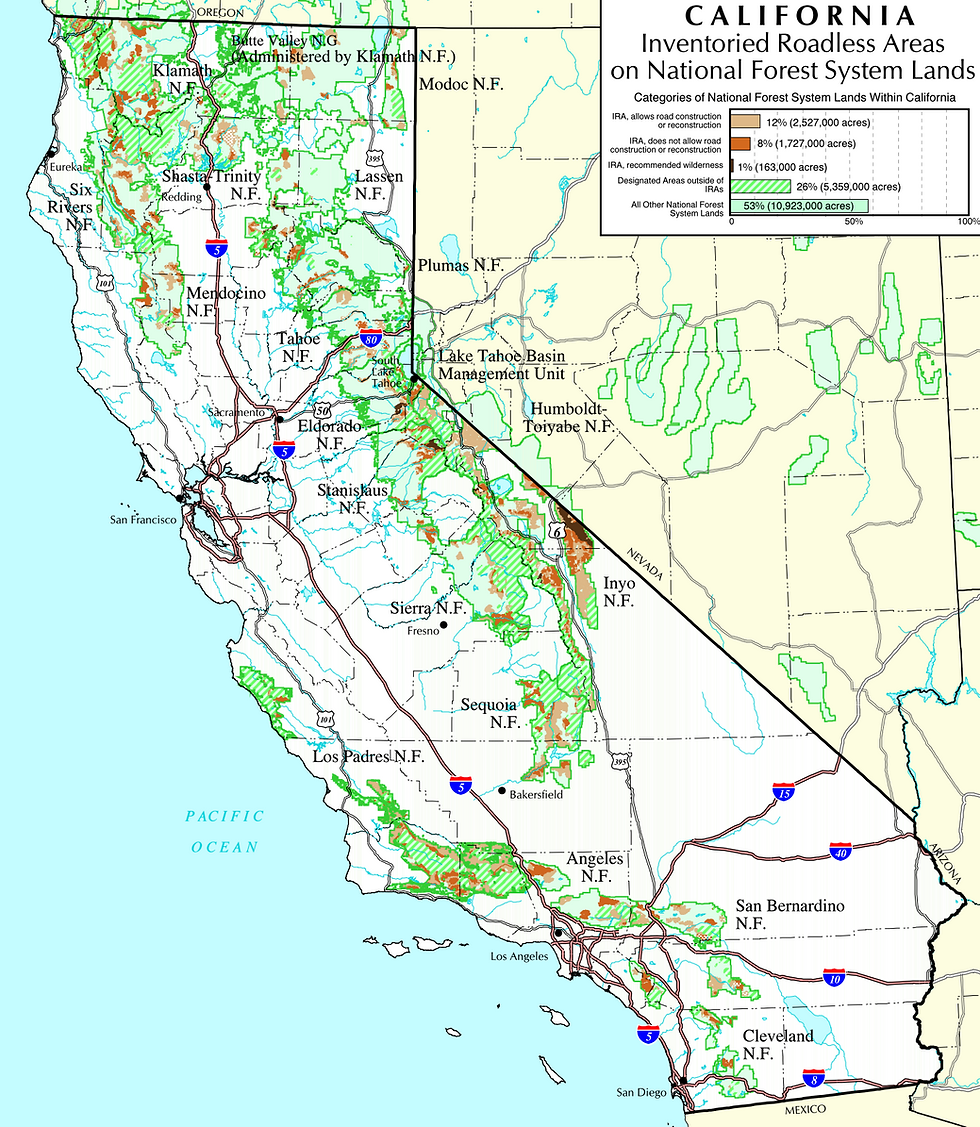Proposal to Strip Federal Wolf Protections Faces Strong Opposition
- EPIC Staff
- Dec 17, 2013
- 3 min read
Updated: Aug 28, 2023
Over 100,000 Pacific West residents urge U.S. Fish and Wildlife Service to maintain protections for gray wolves.

“The gray wolf is one of the most iconic creatures of the American landscape and wolves play a vital role in America’s wilderness and natural heritage,” said Pamela Flick, California representative of Defenders of Wildlife. “Californians, Oregonians and Washingtonians want to see healthy wolf populations in the Pacific West. In fact, recent polling clearly demonstrates overwhelming support for efforts to restore wolves to suitable habitat in our region. Removing protections would be ignoring the voices of the majority.”

“Wolves are wide-ranging species that don’t stop at state borders,” said Jasmine Minbashian, with Conservation Northwest. “They need the federal Endangered Species Act’s coordinated, big-picture approach if they are to recover throughout their range.”
Wolves are just starting to return to the Pacific West region, which includes the western two-thirds of Washington, Oregon and California. This area is home to fewer than 20 known wolves with only three confirmed packs existing in the Cascade Range of Washington and a lone wolf (OR-7) that has traveled between eastern Oregon and northern California. Wolves in the Pacific West region migrated from populations in British Columbia and the northern Rockies.
“Wolf recovery has given hope to Americans who value native wildlife, but remains tenuous on the West Coast,” said Rob Klavins, wildlife advocate with Oregon Wild. “Wolves are almost entirely absent in western Oregon, California and Washington. Especially as they are being killed by the hundreds in the northern Rockies, it’s critical that the Obama administration doesn’t strip wolves of basic protections just as recovery in the Pacific West begins to take hold.”
“The current proposal by the Fish and Wildlife Service to prematurely strip wolves of federal protection would limit recovery opportunities for the Pacific West’s already small population of wolves,” said Lauren Richie, director of California wolf recovery for the California Wolf Center. “Scientists have identified more than 145,000 square miles of suitable habitat across the region, including California, where wolves have yet to permanently return.”
“Wolves belong on the California landscape. They are deeply embedded in cultural traditions and as an apex predator provide valuable benefits to our ecosystems,” said Kimberly Baker, Public Land Advocate for the Environmental Protection Information Center. “We need to ensure that wolves are given the protections they deserve so they can recolonize California wilderness areas such as the Marble Mountains, Trinity Alps and backcountry areas around Lassen and Mt. Shasta.”
“It’s a powerful statement when nearly 1 million Americans stand shoulder-to-shoulder with the nation’s top wolf experts in their conviction that gray wolves still need federal protections,” said Amaroq Weiss, West Coast wolf organizer with the Center for Biological Diversity. “Wolf recovery on the West Coast is in its infancy, and states where protections have been lifted are hunting and trapping wolves to bare bones numbers.”
To promote gray wolf recovery in the Pacific West and combat misinformation, the Pacific Wolf Coalition has launched its new website — www.pacificwolves.org. The site, which offers easy access to factual information and current wolf news, is part of the coalition’s ongoing work to ensure wolf recovery in the West.
“OR-7’s amazing journey shows us that wolves can recover to the Pacific West, if we give them a chance” said Joseph Vaile, executive director of Klamath-Siskiyou Wildlands Center.
“Americans value native wildlife. Spreading the word on what is happening with wolves here and across the country has never been more important. That is why the Pacific Wolf Coalition is using the end of the public comment period as an opportunity to launch our new website,” said Alison Huyett, coordinator of the Pacific Wolf Coalition. “The website will provide the public with current, reliable information on what is happening with wolves and describe how citizens can become involved in protecting this majestic and important animal.”
– # # # –
The Pacific Wolf Coalition represents 29 wildlife conservation, education and protection organizations in California, Oregon and Washington committed to recovering wolves across the region, and includes the following member groups: California Wilderness Coalition – California Wolf Center – Cascadia Wildlands – Center for Biological Diversity – Conservation Northwest – Defenders of Wildlife – Endangered Species Coalition – Environmental Protection Information Center – Gifford Pinchot Task Force – Greenfire Productions – Hells Canyon Preservation Council – Humane Society of the U.S. – Klamath-Siskiyou Wildlands Center – Living with Wolves – National Parks Conservation Association – Natural Resources Defense Council – Northeast Oregon Ecosystems – Oregon Sierra Club – Oregon Wild – Predator Defense – Project Coyote – Sierra Club – Sierra Club California – Sierra Club Washington State Chapter – The Larch Company – Western Environmental Law Center – Western Watersheds Project – Wildlands Network – Wolf Haven International





Comments